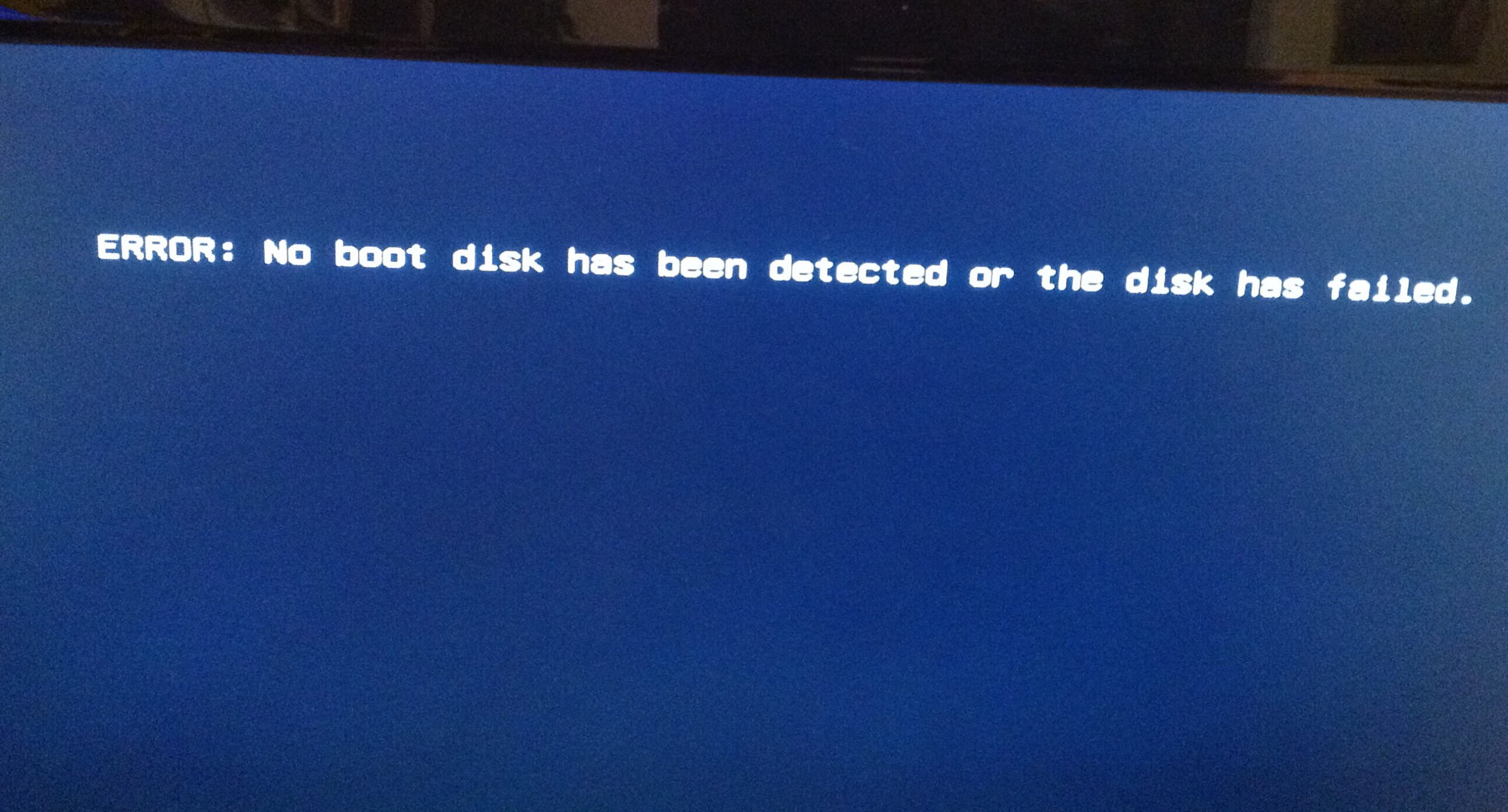

- #Windows xp boot disk non system disk or disk error install
- #Windows xp boot disk non system disk or disk error windows 10
- #Windows xp boot disk non system disk or disk error code
- #Windows xp boot disk non system disk or disk error Pc
- #Windows xp boot disk non system disk or disk error windows 7
L5: 4GiG FAT32 for fixed size unfragmented pagefile.sys, used by all Windows as virtual memory
#Windows xp boot disk non system disk or disk error windows 10
P3: 32GiB NTFS Windows 10 32 bits (UpGrade from the cloned 7, then moved here, and boot fixed with DVD)
#Windows xp boot disk non system disk or disk error windows 7
P2: 32GiB NTFS Windows 7 32 bits (UpGrade from the cloned Vista, then moved here, and boot dfixed with DVD) P1: 32GiB NTFS Windows Vista 32 bits (preinstalled without DVD/CD, first sector can not be moved or it will not boot unless fix with a Vista PE optical disk) I also have a Linux 32 bits on that disk.

I use Grub2 to boot each one and hide system partitiojs of the others (isolating windows systems). What will happen or how can MBR be converted to GPT if has more than one Windows? All windows are 32Bits. In the Volumes tab, you can see that the type of the partition table is GPT (Partition style – GUID Partition Table). Open Disk Manager ( diskmgmt.msc) and select system disk properties. You can make sure your Windows is located on the GPT drive. If you have done it right, the system should boot correctly. Go to BIOS and change the boot order so that your USB flash drive or SD card come first.
#Windows xp boot disk non system disk or disk error code
Write the boot code to the USB flash drive to provide bootmgr (Windows Boot Manager) startup: bootsect /nt60 G: /mbr /force. Copy the Windows boot environment files from the system volume to the USB flash : bcdboot d:\Windows /l en-us /s g:. List volume make sure that the partition on the flash drive is assigned the letter G: 3Īssign letter=G assign any free letter to it, e.g., G In this example, you can see that the volume that we have created is No. List volume display the list of volumes again. Select partition 1 select the first partition on the USB flash drive Do not use the NTFS file system for USB flash drive, because the system will not be able to boot from such partition) Create a partition on the USB flash drive:Ĭreate partition primary size=1000 create a main partition on the USB flash drive, 1 GB in our caseįormat fs=fat32 (format the partition in the FAT32 file system. Select your HDD: select disk 0 and display the list of volumes on it: list volume According to the size of volumes, you can see that the system is installed on the Volume 2, which has letter D: assigned (it can differ from the letter of the system disk, displayed by Windows itself) Let’s dwell on the disks and assigned letters. Now there are two disks in the system: Disk 0 is a 40 GB hard disk with the OS installed (* in the Gpt column shows that this disk contains the GPT partition table) and Disk 1 is a 1 GB USB flash drive. Display the list of the disks in the system: list disk. Boot from the Windows installation (DVD/USB) media with (suitable Windows 10 or Windows 7 installation image), and press Shift+F10 on the Windows Setup screen to open the command prompt: Excellent! Plug in a small USB flash drive or an SD card. Restart the computer and make sure that the BIOS can not boot from the hard disk with the GPT table. Thus, the conversion of partition table into GPT has been successful! Moving the Windows Bootloader to the USB Flash Drive Writing secondary GPT to LBA address 83786657… Writing primary GPT and protective MBR to LBA address 0… Such partitions will remain bootable after conversion. 0 at the end of the physicaldrive shows that disk 0 should be converted. #Windows xp boot disk non system disk or disk error install
Thus, it will not be possible to install or boot Windows from a GPT disk on older computers with classic BIOS firmware. However, only 64-bit Windows versions installed on motherboards supporting the new UEFI specification (Unified Extensible Firmware Interface) are able to boot from a GPT volume.
No need to use logical partitions subject to various errors.Īccording to the official Microsoft documentation, all its OSs starting from Windows Server 2003 SP1 support volumes with GPT markup as the data disks. Thus, the disk partition structure will not be lost if the first disk sectors are damaged High reliability achieved by duplicating the partition table at multiple locations on the disk and verifying the partition table using cyclic redundancy check (CRC). Support for up to 128 partitions on the disk (only 4 partitions in MBR available). Support for hard drives over 2.2TB (maximum available GPT disk size is 9.4 ZettaBytes (9.4 x 1021 byte)). What advantages does GUID Partition Table (GPT), a new format of table partitioning on a hard drives, gives? GPT allows to bypass a number of limitations of the classic MBR Partition Table. Moving the Windows Bootloader to the USB Flash Drive. Gptgen: Converting MBR to GPT without Deleting Partitions. #Windows xp boot disk non system disk or disk error Pc
Installing Windows on a GPT disk on a BIOS PC.






 0 kommentar(er)
0 kommentar(er)
